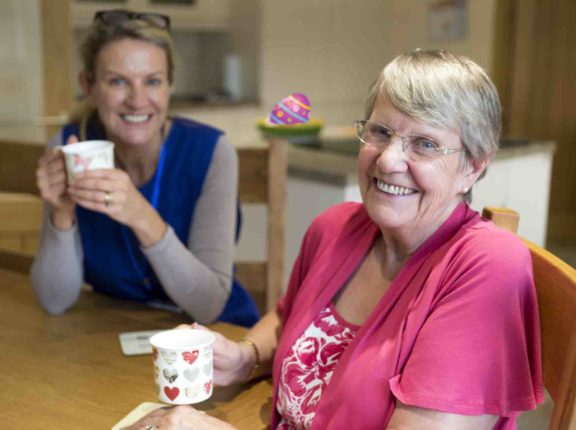The rollout of Support at Home is set to bring big changes to the way in-home aged care is delivered. Services will be more flexible and person-centred, and you’ll be able to access new funding streams and pathways aimed at keeping you safe, well, and independent for longer.
This month, we’re taking a look at the Restorative Care Pathway, which will replace the old Short-Term Restorative Care Programme.
What is the Restorative Care Pathway?
The Restorative Care Pathway is designed to support your recovery, rehabilitation, and independence by providing up to 12 weeks (which may be extended to 16 weeks) of intensive nursing and allied health support.
What this looks like will be different for everyone. It might involve a program of activities and exercises to improve strength and balance. It could also mean having a dietitian help you prepare nutritious meals, or installing minor modifications around the house, such as bathroom rails.
The Restorative Care Pathway will support you to:
- prevent or delay the need for ongoing in-home care services or the need to access higher levels of ongoing care
- regain your ability after illness or injury to carry out daily activities
- manage new or changing age-related conditions
- learn how to help better retain function as you age.
Am I eligible for the Restorative Care Pathway?
Your aged care assessment will include a conversation about health and mobility, and whether restorative care might help you stay active, safe, and independent. If your assessor believes restorative care will prove beneficial, you will be allocated a budget to fund these services. You will then work with your provider to set goals, develop a goal plan and arrange your services and supports.
Your Restorative Care Plan may include:
- Tailored exercise programs to improve strength, balance, and mobility
- Access to physiotherapists, occupational therapists, and other allied health professionals
- Help from a dietitian to plan and prepare nutritious meals
- Recommendations and installation of mobility aids or home modifications like grab rails or non-slip mats
- Nursing care to monitor health and support recovery after surgery or illness
Will I need to contribute to the cost of restorative care?
The same contribution arrangements will apply to the Restorative Care Pathway as to the ongoing services categories. This means that although you will not need to contribute to clinical supports such as nursing, independence supports, like personal care and transport, will require a moderate contribution, and everyday living supports, like cleaning and shopping, will require a higher contribution.
Who will deliver my restorative care services?
Your home care provider will assign a dedicated Restorative Care Partner who will coordinate your care, provide clinical oversight, and work with you to develop a goal-based care plan that will help you to recover and maintain your strength and mobility.
How can I access Support at Home?
Support at Home will roll out across Australia on 1 November 2025. If you’re just starting to explore government-funded aged care support, you can visit My Aged Care or call them on 1800 200 422 to begin the aged care assessment process. After your assessment, you will receive a plan outlining the aged care services you can access.
If you are already receiving home care through Home Care Packages, you will automatically move across to Support at Home; however, if you’re currently receiving services through the Commonwealth Home Support Programme, nothing will change until July 2027, when you too will transition to Support at Home.
If your circumstances change, and you need to be reassessed, simply visit My Aged Care or call them on 1800 200 422 to arrange to be reassessed.
We’re here to help
At LiveBetter, we understand that navigating the transition to Support at Home may be confusing. If you have any questions about how the new program might impact your care, our team is here to help you every step of the way.
For more information on how to get the most out of Support at Home, reach out to our experienced team today.




